About Lieber Guitars
Origins
Lieber Instruments is a guitar company founded by Thomas Lieber, a Designer and Luthier, who has been creating guitars since 1971. While still considered new in the industry, Tom became involved with some recording and performance giants. In 1974, while with Doug Irwin, Tom shared design credit for guitars going to Jerry Garcia and Phil Lesh of the Grateful Dead. The following year, also with Irwin, he designed and built a custom bass for Pete Sears, of the Jefferson Starship.
The Sears project required several design sessions with Pete and as a result: Pete had a beautiful bass, Tom and Pete became good friends, and Tom realized he could hold design sessions with recording artists – really listen to the artists’ needs, and, with his innovative ingenuity, he could build them an instrument they loved!
At the same time he could push the envelope of guitar building a little further. From this point on, the company began a long run of patented innovations.

Mid 70’s
During the mid 70’s, Tom set out to develop an acoustic bass guitar that was well voiced and could “play-out” with acoustic six strings in live performance. The current Spider Grinder Concept Bass has its roots in this same namesake, which first appeared in 1976.
The original Spider Grinder acoustic bass comprised a patented, dual bowl, synthetic back, hand-carved wood top, and a Honduras mahogany neck. This instrument produced rich, deep, bass tones and offered the artist comfort in playability through its ergonomic design.
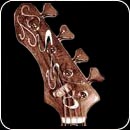
The 70’s was a busy decade for Lieber Instruments. In 1979, Stanley Clarke became the proud owner of a custom Spider Grinder acoustic bass. At that time, Stanley was also playing Rick Turner’s first graphite neck, through body, Alembic electric bass. Stanley loved the graphite neck, and felt that an all composite bass was the way to go. He commissioned Tom to design such a bass.
Stanley approved the design and Tom built a prototype guitar which required four patents to handle the innovations. Stanley loved the bass, and in a joint venture, Tom and Stanley formed the Spellbinder Corporation in 1980. Spellbinder produced a limited edition run of fifty Spellbinder basses. One additional custom left-handed version was built at Stanley’s request, as a personal gift from Stanley to Paul McCartney. The run was a success and, as planned, the Spellbinder molds were destroyed to insure the instrument’s value.
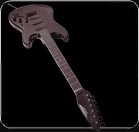
The 80’s
During the 80’s, after already establishing himself as a master Designer/Builder, Tom envisioned a new neck design so radical, so different from anything yet produced, he himself was cautious about proceeding. After a few prototypes of wood were completed, Tom knew he had something special.
The Lieber Speedneck, as it is now known, has a functional design, consisting of a protruding ridge, or backbone, running the length of the neck underside. This “ridge” defines the cross-sectional envelope of a conventional neck. All similarities with conventional necks end here.
The material on either side of the Speedneck’s ridge has been relieved in size, so as to reduce drag and allow effortless playing of the instrument. The patented Speedneck design required considerable manufacturing R and D to take it from a prototype to the production model of today. Lieber Instruments developed a patented graphite composite molding process which produces the “state of the art” Speedneck.

Near the end of the 80’s, Tom wanted to electrify the Spider Grinder. Unsatisfied with market-available magnetic pickups, the company began development of its patented Lieber EQ-4 Pickup found on the current Spider Grinder edition. The EQ-4 is a remarkable pickup innovation. Individual magnetic pickup poles slide in a slotted coil underneath each string. As with conventional pickups, their location under the strings determines the sound. Being able to individually locate each string pole is a Lieber EQ-4 exclusive. This afforded never-before adjustability at the sound source.
The 90’s
In 1991, Chris Stein of Blondie added himself to the growing number of Speedneck Guitar fans. In 1994, after collecting a few Speedneck guitars, Chris was interested in commissioning a custom instrument with Lieber Instruments. Chris had a concept of a radical ornamental design, basing its theme upon the art of Chris’ friend, H.R. Giger.
Later that year, during a meeting between Lieber, Stein and Giger, the details for this project were finalized. In the summer of 1998, Lieber’s Gigerstein was completed and delivered to Chris.
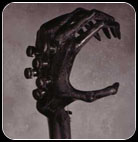
During the building process of the Gigerstein guitar project, a new ornamental guitar design was also being conceived. This guitar design employed a new construction technique adding to the already vast catalog of innovative guitars created by Lieber. The Butternut Guitar, with its sound block construction, was introduced and received broad acclaim throughout the guitar playing world. “Not a Fender or another Gibson clone but a new guitar with a sound and feel all of its own”.
While the Butternut was beginning its momentum within the market place, Tom received a call from an old friend inquiring as to his possible interest in reforming the company they had established back in 1980.
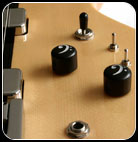
2000 to Present
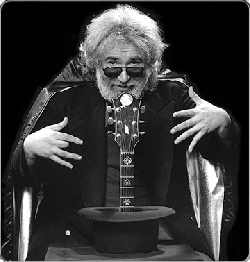
Stanley Clarke, the master bassist and sonic envelope pusher himself, wanted to engage Tom once more to reform the Spellbinder Corporation. Stanley’s sole intent was to design and produce a new bass for the passive electronics P and J bass lovers (no, not peanut butter and jelly!)
Thus, Spellbinder Corp. was reformed and its related products (SB II Bass, Mando Piccolo Bass, SB Guitar, Spellbinder Blue Amp, SC signature wah pedal and a full line of SB strings), became the main focus of Lieber for several years. During this period many inquiries for custom one-of-a kind instruments were considered.
A few were produced, including a revisit of the original Garcia guitar design. The resurgence and interest in this guitar design is what has led to the company’s refocus to instill elements of this design structured with a more affordable price point.
Today, Lieber Guitars is proud to offer the American Beauty Classic, bringing full circle Tom’s very first ornamental guitar design as a young apprentice with D Irwin guitars . . . The Garcia, now referred to as Tiger.
“I have been really taken aback by the public’s love of this guitar design and I recognize the flattery bestowed upon me by all the other builders with their recreation of this design. Truth is that it would have merely been just another guitar design if Jerry hadn’t embraced it!”
~Thomas Lieber
Patent Innovations
- July 17 1979: Body for Bass Guitar U.S. Utility Pat.# 4,161,130
- Dec 30 1980: Adjustable Bridge Japanese Utility Pat.# 55-189372
- Dec 30 1980: String Nut Japanese Utility Pat.# 55-189371
- Feb 3 1981: Adjustable Bridge U.S. Utility Pat.# 4,248,126
- Feb 3 1981: String Nut U.S. Utility Pat.# 4,248,127
- Feb 2 1982: Guitar Construction U.S. Utility Pat.# 4,313,362
- Aug 31 1982: Spellbinder Bass Ornamental Design Pat.# 266,003
- Jul 26 1988: Musical Instrument Neck U.S. Utility Pat.# 4,759,250
- Sep 26 1989: Pickup Assembly for Stringed musical Instr. U.S. Utility Pat.# 4,869,144
- Aug 21 1990 Molding Process for Musical Instr. Neck U.S. Utility Pat.# 4,950,437